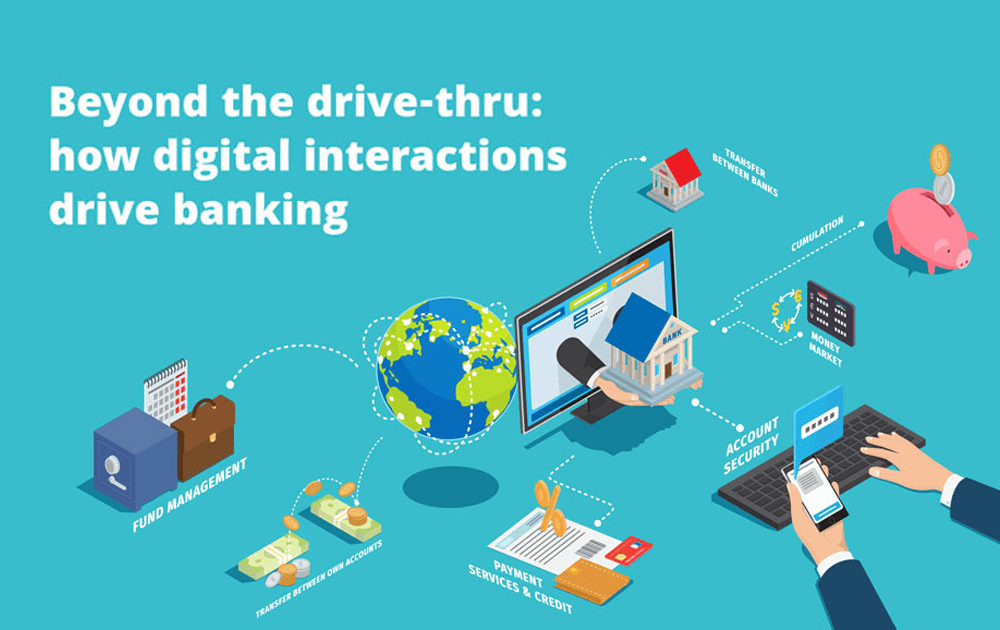The pandemic served as a catalyst that launched many businesses into a digital transformation. Businesses that successfully navigated this new arena forever changed customers’ expectations: they now expect much more than a digital storefront. A McKinsey customer study revealed that conversion rates could be boosted upwards of 20 percent by revamping existing user and customer experience technologies. These omnichannel digital communications experiences matter and organizations that embrace them will succeed in delighting their current customers while also attracting new ones.
Banks Keep Account Holders Happy with Digital-first Options
Traditional banks with physical branch offices are still the primary place for people to keep their accounts. With that being said, their in-person presence is declining — nearly one out of every ten branches closed between 2017 and 2021. In light of the lockdowns, customers are increasingly choosing online options over walk-in and drive-thru services for their banking needs. Although a few alternative online-only banks are gaining ground, traditional banks are playing catch-up to retain their account holders.
A catalyst for change. Like other sectors, banking was rapidly thrust into the digital realm. Even the most risk-averse financial institutions were forced to join the digital transformation as everything from transactions and customer service to call centers and workspaces went virtual. Contactless payments hit a record high, and banks raced to establish robust e-commerce platforms to handle the volume.
Simple and personalized experiences. Customer expectations for service and interactions are rising; they want the buying process to be as simple as a few clicks on a website, but they also want personalized options. As a result, digital services such as mobile deposits have emerged in tandem with data-driven, AI-powered insights into account holder preferences in the hope of boosting customer satisfaction and retention.
First-contact resolution. In our world of self-service, consumers want to find answers online rather than wait on hold in a queue. When human intervention is unavoidable, unified communications offer customer-friendly options. Advanced call routing directs callers to the right extension, and there are platforms that enable SMS texting so customers can chat with a bank representative from their mobile phones. In either case, the goal is to do what it takes to resolve the problem during the first contact.
Anytime, Anywhere Banking Attracts New Customers
While banks have upped their digital game during the pandemic out of necessity, they must continue adapting to the needs of digitally savvy consumers. In addition to looking for online options, an increasing number of consumers are gravitating toward mobile banking. They want to be able to check their balance, make a deposit, and transfer funds wherever they are — even at a point of purchase or when banking hours are long past. While Gen Z and Millennials are shoe-ins for mobile banking, it’s embraced across generations by nearly nine out of ten people.
Convenience. All things equal — security, offers, fees, rates, etc. — digital tools that offer convenience will win the day, so banks must ensure that their digital interface is easily accessible and intuitive. If customers can’t access what they need on the first try, they might not try to find a solution through a bank-owned channel. With many competitors vying for their dollars and loyalty, they may find another place to park their money.
Consistency. Customers want services and solutions that are consistent. No one wants to end an online interaction only to have to start an offline one to fully resolve an issue or finalize a transaction. Banks need unified communication channels so that a bank representative can call, text, or web conference with customers from one app. Banks that can deliver services or solve problems in the customer’s channel of choice will earn the customer’s loyalty — and revenue.
Human touch. While customers are leaning into digital interactions, they also want the option to connect with a real person. Flexible support is made possible by unified communications solutions that enable calls to be routed to the correct representative, upgraded to a video call, and improved by screen sharing for sharing pertinent data. Unified communications also enable that same representative to use the same platform for two-way texting.
The Bottom Line
It’s a new world for banking and one where the customer is king. Digital interactions are on the rise, but voice and in-person connections still matter to specific demographics and situations. Unified communications enable banks to satisfy all customer preferences and requirements, winning them over with a better experience, expedient service, and improved profitability.
Contact us to learn more about how Broadvoice b-hive can unify communications for your bank employees and customers.









